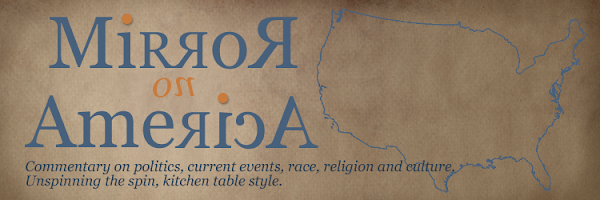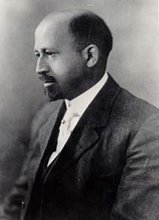Saturday, February 13, 2010
Movie Review: What's the Matter with Kansas
Background and Context
I am a big fan of Thomas Frank’s book, What’s the Matter with Kansas: How Conservatives Won the Heart of America which I reviewed in 2007. The book was an exploration of why many working class Americans seem to vote against their economic interests and consistently and reliably vote Republican. Frank’s answer, in a nutshell, is that the Democratic Party since the 1990s has abandoned its populist roots to become the other party of corporate interests and Big Business. With both major parties in collusion with Wall Street and big business and no significant difference between Democrats and Republicans on economic issues, working-class voters really have no choice or platform to vote for or against in a two-party system except so-called “values” issues such as gay marriage, abortion, gun ownership, prayer in schools, etc. And in this arena, Republicans have the Democrats beat as they have honed their appeal to social conservatives.
Frank’s book became very influential the past decade and was hotly debated in political circles on the liberal end of the political spectrum. It became a lightning rod for discussion on the policy thrust and direction of the Democratic Party and where it is going to go in terms of its appeal to working class voters in the future.
In late 2009 I heard that a documentary came out based on Thomas Frank’s book. I was highly excited about the film, being a huge fan of the book and having followed the discussions which centered on the question of the Democratic Party appealing to and actually representing the interests of working class and middle class voters. I was curious how the arguments that Frank made will translate to the film medium and what type of angle the film will take. I was especially curious how the film would hold up illuminating issues in the post-Obama era of American right-wing politics: the rise of conservative populism of the Tea Parties; the popularity of right-wing talk TV and radio personalities Glenn Beck and Rush Limbaugh; the rise of Sarah Palin and her impact among working and middle class voters, etc. I wanted to see if the film shed new insights to Thomas Frank’s basic question of why the right wing and the Republican Party are so popular among people who are being steamrolled and whose interests are being gutted by the policies of politicians who subscribe to conservative ideology and who belong to that political party. What angle does the film take, if any, in regards to this question?
The Film
The filmmakers of What’s the Matter With Kansas created a documentary that presents the characters and ordinary people who inhabit the political universe of Kansas in 2006 and 2007 largely as they are without making any judgments on their characters or their political affiliations. The filmmakers do not explicitly indicate if they intend for the economically depressed Kansas in the mid- 2000s and the Republican conservatives that have made a political stronghold in that state to serve as a microcosm of American society in general. That point is largely inferred based on the book that the film was based on. The film largely lets the characters tell their stories in their own words, without providing narration, voiceovers, and with background factual information largely absent. The viewer is largely left to see the characters as they are and to come to their own conclusions.
What’s the Matter With Kansas, thus, functions and is best understood on the level of metaphor rather than as a straight-up, political documentary in the style of Michael Moore. In fact, the movie seems to be the antithesis of the brash, in-your-face style of Moore who takes a position on an issue and runs with it, each scene designed to support his argument and rebut his critics. What’s the Matter with Kansas flows organically from vignette to vignette and character to character each narrating their view of the world, politics, Kansas, economic issues in their community, religion, abortion, homosexuality, politics, activism, etc.
Without giving too much away of the documentary, the film culminates in some conservative followers of a politically-active, evangelical pastor losing hundreds of thousands of dollars they have invested and/or donated to a local amusement park (which has been serving as the headquarters for the church after the pastor was expelled from the main church for his Republican political activism) when the owner of the park filed for Chapter 11 bankruptcy. The well-meaning investors, all friends of the owner and devout followers of the pastor, are devastated and even raise the question of amusement park owner as a crook and a swindler.
I saw these events as a metaphor for the Republican Party (or the Democratic Party, for that matter) who, the film shows, supported and passed economic policies like NAFTA which has resulted in economic devastation in the American heartland. Could the two major parties be likened to crooks who have swindled ordinary Americans into supporting and believing in policies that, in the end, have been to their detriment?
The film also devotes a good amount of time to the history of Kansas as a hotbed of radical political activity in the 19th century. Female suffragists, Socialists, Populists and political radicals gravitated to Kansas and at one point in history, Kansas had Populist senators, governors and members in Congress. It was publishing a Socialist newspaper that rivaled the New York Times in circulation.
The book’s author, Thomas Frank makes a cameo and visits the radical cemetery where many of the figures from Kansas’ radical past are buried and a museum devoted to preserving artifacts from this era. He asks “what happened to Kansas?” to the archivist who says that in recent years, these facts and history have been largely forgotten.
What’s the Matter with Kansas Part II?
Since filming was done in 2006 and 2007, it is missing significant upheavals in American political and popular culture in recent years after Barack Obama’s election as President. The film largely focuses on the ideological battles between pro- and anti-abortion activists and the issue of homosexuality and gay marriage.
Fast forward to 2010 where conservative activism is explicitly angrier, economically populist and increasingly organized as in the rise of the Tea Party movement. I go back to my original question: does the film shed new insights to Thomas Frank’s basic question of why the right wing and the Republican Party are so popular among people who are being steamrolled and whose interests are being gutted by the policies of politicians who subscribe to conservative ideology and who belong to that political party?
I think a What’s the Matter with Kansas Part II is crying to be made in light of the events I described above. Yes, the film is relevant to presenting the values voter and the sway Republican Party and conservative ideology continues to have for a significant numbers of working and middle class Americans. In the post-Obama era in the wake of the economic collapse of Wall Street in 2007, bailouts and widespread populist anger, conservatism and the Republican Party, rather than be weakened and get marginalized to irrelevance, has experienced a resurgence with a vengeance.
These developments are counter-intuitive to me who sees conservative economic polices and the political party that largely advocated those policies as having been completely discredited by the economic collapse. Yet here we are in 2010 with Sarah Palin becoming a major player in national politics, the grassroots, anti-establishment energy of the Tea Party movement has become mainstream and co-opted by the Republican Party, right wing TV and radio as popular as ever. 2010 is about economic policy and how conservatism and the Republican Party continues to hold sway over a significant part of the population. What does this mean in terms of the American voter, the political choices that we have and the prospects of a radical uprising in the manner of the 19th century Kansas radicalism? If there ever were a time for 19th-century style Populist resurgence, it would be now. Yet the Right, inexplicably, seems to have the advantage on that end. Why?
The Liberal Arts Dude gives What’s the Matter with Kansas four out of five stars. Go see the movie when it comes to your area.
Subscribe to:
Post Comments (Atom)















1 comment:
Movie isn't in my area... but I will keep my eyes open for it.
I don't know if I buy Frank's reasoning for why rural voters go Republican. There have been plenty of populist Dems.
Post a Comment